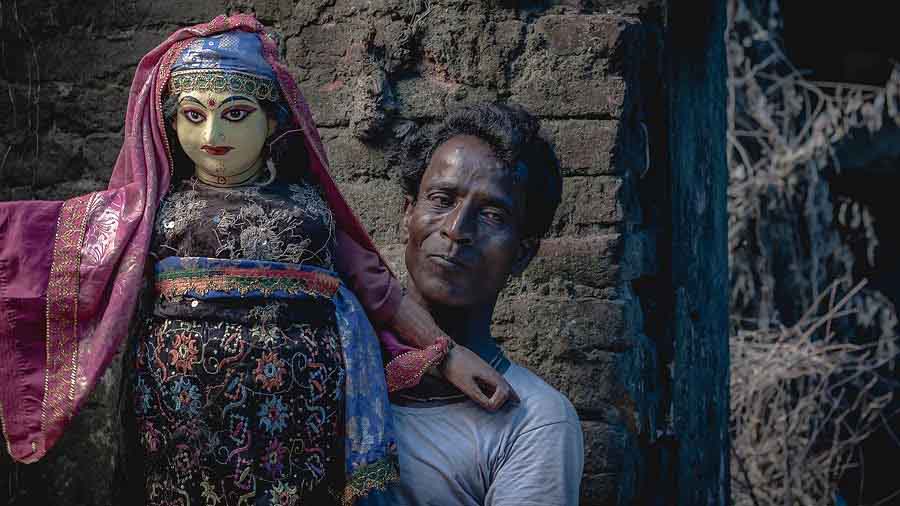When the wood begins to tell a story at the twirl of her fingers, Anurupa Roy enters a world where humans and inanimate beings become co-actors.
Meet Anurupa, a puppeteer, puppet theatre director and puppet designer based in Delhi. She is the founder of The Katkatha Puppet Arts Trust and is on the puppetry committee of the Sangeet Natak Akademi.
Impressive credentials. What is immediately fascinating too is the way she talks about her art. Puppetry, she explains, is not merely about “manipulating dolls with strings”; it is fusion of the plastic and the performing arts where sculpture, masks, figures, objects and narratives come together with music, movement, physicality and theatre to create a metaphorical stage.
Humans and puppets interact in this animated theatre of the inanimate, she says. They become, in a nutshell, co-actors.
That’s a lovely way of putting it, one can’t help observe — the interdependence of the animate world and the inanimate.
Anurupa smiles. It’s a compliment she must have heard dozens of times since she entered the world of puppetry as a professional 25 years ago in 1998. That was also when her group, Katkatha, an association of puppeteers, was formed.
Katkatha is an amalgamation of two Hindi words. Kat (wood) comes from the word kathputli (puppets made of wood) while katha means stories. Put together, they become puppets and stories.
That is one vision of Katkatha: to promote and popularise puppet theatre through stories and further exploration of their art form.
“Many people have told us this is not puppetry. They think that way because they are used to seeing shows where only puppets are used, not human figures. But in modern puppetry theatres, humans are included too,” Anurupa says.
But before we plunge deeper into Anurupa’s story, a brief recap of the art of puppetry in India.
Types of puppets
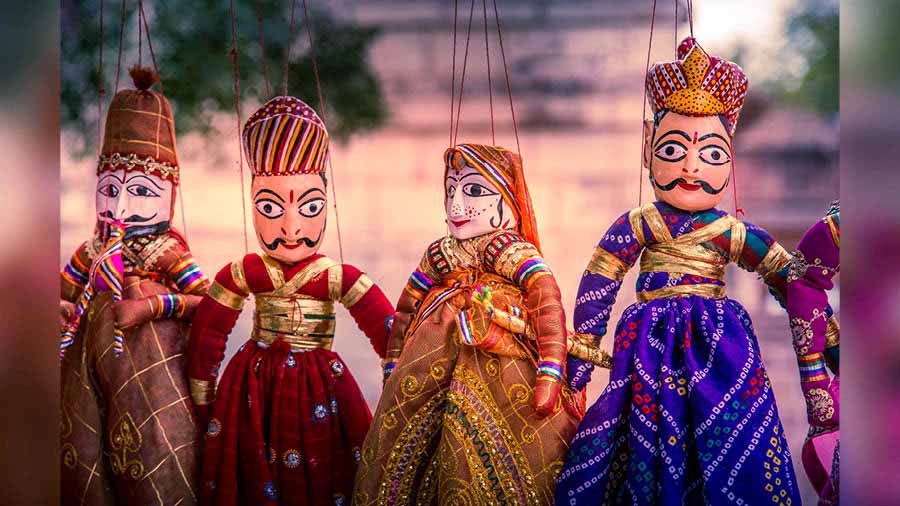
In Rajasthan, string puppets are called ‘Kathputli’ Shutterstock Shutterstock
The four major types of puppets that performers use in the country are glove puppets, string puppets, rod puppets and shadow puppets.
Glove puppets can be worn like a glove and their movement is controlled by moving the fingers. In West Bengal, glove puppets are found in Padmatami, East Midnapore. They are also locally called Beni putul. In Kerala, glove puppets are known as Pavakathakali.
The most popular kind of puppets — string puppets — are called Tarer putul or Shutor putul in Bengal. As the name suggests, strings are attached to the puppets and controlled. In Rajasthan, string puppets are called Kathputli.
Danger putul, as rod puppets are called, are usually huge and heavy models that have to be moved with the help of rods attached to them. In South 24-Parganas, rod puppets are popular. The acts are usually like that of jatra pala.
Shadow puppets are most popular in Odisha and southern India. These puppets are made of leather and are very colourful. Puppets are placed between a light source and a screen and moving them creates the illusion of moving images on the screen. In Odisha, shadow puppets are called Ravana chhaya and in Kerala they are known as Tholpavakoothu.
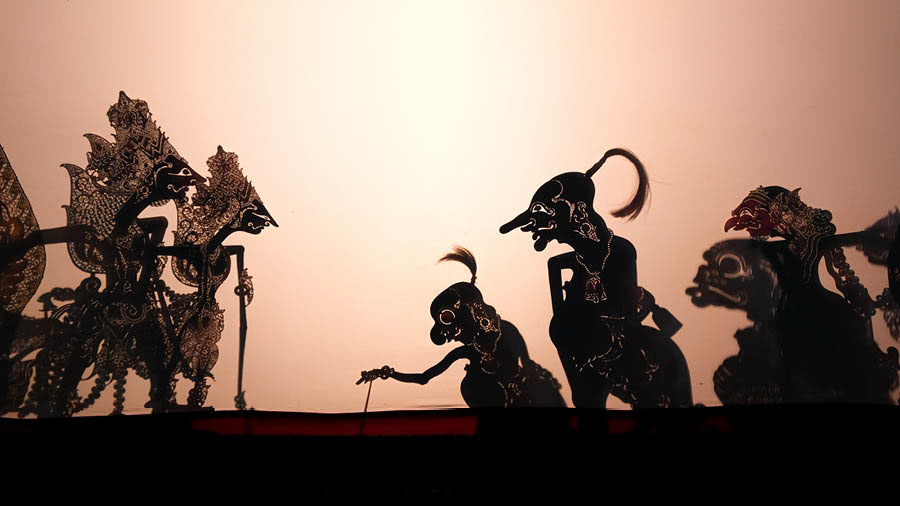
Shadow puppetry Shutterstock
Coming back to Anurupa, she has directed several shows ranging from adaptations from the Mahabharata to Shakespearean comedies and the Arabian Nights. “Our first productions were Aladdin and Ali Baba. We changed the story and talked about power and status. Our recent production is also based on the Arabian Nights — three primary stories and a few secondary stories. The premise is based on a king named Shahryar who took a new bride each day and executed them the next morning. Then Scheherazade, the daughter of one of the king’s advisers, marries Shahryar. She tells the king a story every night but does not finish it. The king, curious to know how the story ends, is forced to postpone her execution. She survives. This is a story of power execution. Instead of the queen we have used knights to tell the story.” In other words, the knights have been shown to represent the exercise of power.
Her most recent show was at the Kiran Nadar Museum of Art in New Delhi where they did a retrospective on Tyeb Mehta, the painter, sculptor and filmmaker. “We did a performance based on his paintings,” Anurupa says.
The puppets used by Katkatha range from three inches in height to human-sized figures, and even larger. The group has performed across Europe, Japan and South Asia.
A major aspect of Anurupa’s work is the use of puppets as a medium for psycho-social interventions in conflict areas and at juvenile remand homes. She has also worked with youths and women’s groups across the country, using puppets to raise awareness about HIV/AIDS and gender issues. “From 2003 to 2013-14 we have consistently worked on gender behaviour and reproductive health. We have worked on HIV, and rights of women. Over the past three years we have been working in Uttar Pradesh and Bihar on gender violence on boys. We did this for the entire lockdown period. We also work with art therapists in conflict zones. Now we are doing it in schools in Kashmir,” Anurupa says.
Along with her work has come acknowledgement of her contribution in the field of puppet theatre.
Among the many prestigious awards she has won is the Ustad Bismillah Khan Yuva Puraskar, an annual award given by the Sangeet Natak Akademi to outstanding artists under 40 who have demonstrated talent in the fields of music, dance and drama.
The beginning

Anurupa’s introduction to traditional puppetry came later in life as a researcher and collaborator with traditional puppeteers
How did she become a puppeteer?
It all started at the age of seven when her mother gifted her a puppet. “I started playing and gabbling away with my puppet,” she says.
While that was her introduction to puppets, regular puppet shows in her school, Sardar Patel Vidyalaya, New Delhi, deepened her interest. “There were travelling puppeteers who would come and perform in our school. I slowly got fascinated by the whole thing and eventually took it up as my career.” Anurupa later pursued her studies in puppetry in Stockholm and Naples.
Anurupa was born in Delhi and brought up there. But she speaks fluent Bengali. She has also performed a number of times in Kolkata and connected with acclaimed city puppeteers like Sudip Gupta. That Bengal connect had been strengthened when she did her research fellowship and had to travel extensively in parts of India, including West Bengal, where she visited puppet-makers in the state.
Now in her 40s, Anurupa says she grew up with contemporary puppetry. “Delhi was the hub of contemporary puppetry when I started. One of the noted contemporary puppeteers of India, Dadi Pudumjee, had a studio at the Shri Ram Centre for Performing Arts. We were taken from school there to watch puppet shows. In our school days we used to watch a lot of Russian puppetry too.”

Dadi Pudumjee, a noted contemporary puppeteer TT Archives
Her introduction to traditional puppetry, she says, came much later in life as a researcher and collaborator with traditional puppeteers. “In 2003, for the golden jubilee celebrations of the Sangeet Natak Akademi, I was the assistant coordinator working under Pudumjee. For that I read a lot of books on traditional puppetry and travelled extensively. Different forms of traditional puppetry and contemporary puppetry were to be represented and it was here that I got exposed to traditional puppetry. That moment was very important for me because I came to know about the forms of puppets I did not know about. I visited different parts of India as a junior research scholar. I went to West Bengal, three states of southern India and many more, went to the homes of the puppeteers and learnt a lot about traditional puppets.”
Traditional vis-à-vis contemporary puppetry
The notion of tradition is interesting, says Anurupa. “Tradition does not mean only the art form that passes on from one generation to the other. Very often, the audience passes from generation to generation. Tradition has a critical culture by which I mean a geographical, linguistic and socioeconomic context, which sometimes comes to be known as classical (which is a political or scholastic term). Technically, nothing was ever classical. Everything came from socioeconomic political sources.”
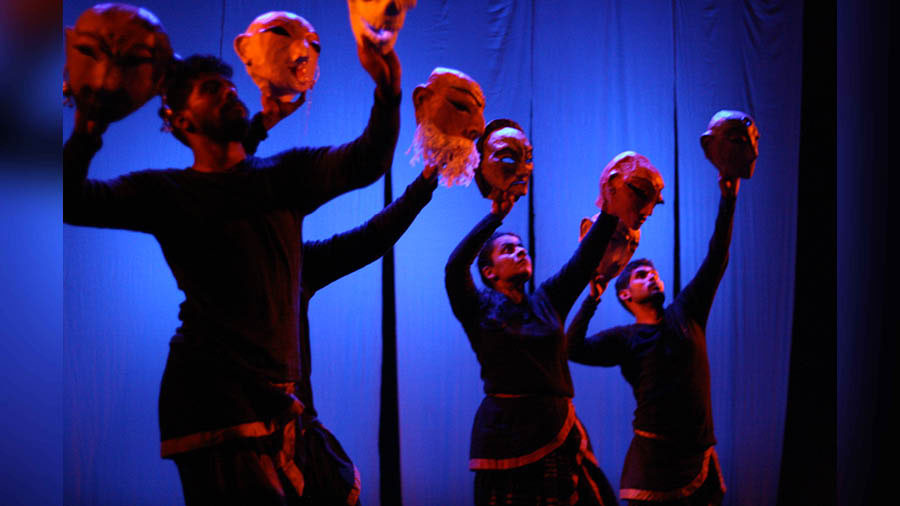
Another sequence from the Mahabharata Photo courtesy: Anurupa Roy
She gives the example of traditional dance forms. “Bharatanatyam, for instance, was a dance form of devadasis. If you take Kuchipudi, it came from the temple or the religious community. In Kerala, the leather shadow play of puppets would be performed in temples, while, in Karnataka, puppet shows were held in the backyard of the family house to celebrate births and weddings or to mourn the death of a family member. What I realised is that it is not about something that is passed on from one generation to the other in a vacuum but is critically passed on as a knowledge system where the audience, or the wider community, already knows about the story that I am going to tell.”
Another example of traditional puppetry that Anurupa cites is that of the Rajasthani kathputliwalas, but the narrative here differs from the other traditional forms. “The kathputliwalas were patronised by Amar Singh Rathore, a 17th-century Rajput royal. The kathputliwalas would speak about his valour and how he defeated certain Mughals and subedars. But no two kathputliwala will tell you the same story.”
Nearly 400 years have passed since Rathore’s death but the show goes on, Anurupa says. “It is somewhat like this: in the background you get to see the Mughals or the subedars and Amar Singh Rathore, and in the front, the jugglers, musicians and magicians entertain the audience.”
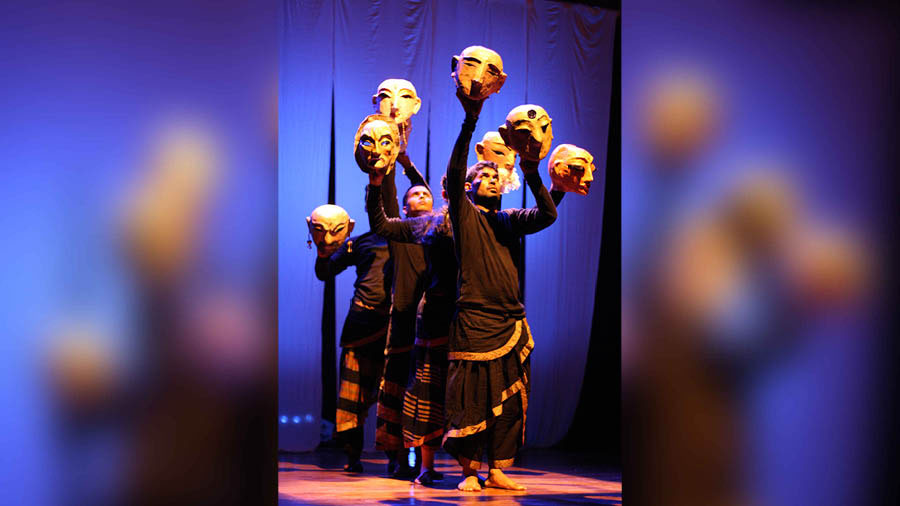
Anurupa tries to convey labels can be deceptive — art has a way of getting around constructs Photo courtesy: Anurupa Roy
In contemporary puppetry, Anurupa says, she tells her audiences a new story. “I have a new audience for every story I am telling . It’s a question of taste and orientation. I have watched puppetry as a child; now I have come to enjoy it as an adult looking for something new. People are coming to see contemporary puppetry because they are familiar with our work or enjoy puppetry in general, or there are people exploring something new. This I feel is the key difference.”
The difference between traditional and contemporary, Anurupa emphasises, lies not only in the art forms but is also deeply rooted in the audience community. “A certain community is addressed by traditional puppetry. But when you get to perform in a city with a number of communities, then your performance becomes contemporary; not restricted to one community.”
Anurupa feels that contemporary is a superficial word. “The traditional puppets that are used today are contemporary because performers of today use them at shows. At all points we are contemporary because we are performing today. The materials used to make traditional puppets are of the present time. Hence, we all are contemporary. So, whether we are contemporary puppeteers, modern or the next generation of traditional puppeteers is a debatable question.”
What Anurupa is trying to convey is that labels can be deceptive — art has a way of getting around constructs.
Modern puppetry is also metaphorical, she says. For example, doing makeup is a metaphor of change, of time passing and even the rebirth of another character. So, it’s a very literal as well as a metaphorical interpretation. This is a contemporary way of telling the story.
Anthropomorphic forms
Anurupa says her group performs with all forms of puppets, though their use of string puppets has been minimal. “Basically, our puppets are anthropomorphic,” she explains, citing as example the depiction of a scene from the Mahabharata, the killing of Abhimanyu. “Instead of showing horses, we presented men with horse heads. This was just to show how a 16-year-old boy was brutally killed by multiple accomplished warriors. The emphasis, again, is on metaphors. The puppeteers too come out of the shadows, which helps make the puppets look real.”
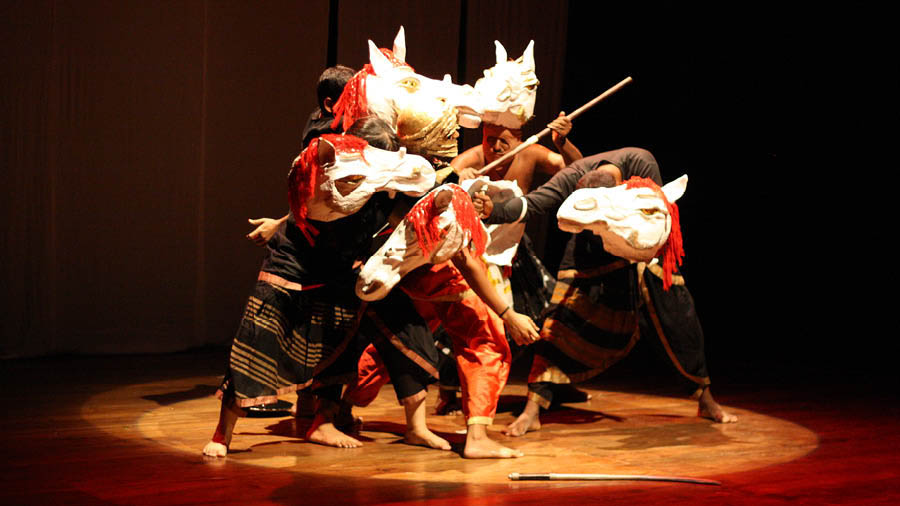
‘Our puppets are anthropomorphic,’ Anurupa says, citing as example the depiction of a scene from the Mahabharata, the killing of Abhimanyu. “Instead of showing horses, we presented men with horse heads Photo courtesy: Anurupa Roy
Her group works through archetypes too. “To show Gandhari, we used a single giant fabric which has her face representing a giant mother. On the fabric are the faces of children. It’s like an archetype of the mother mourning the death of her children in war.”
Apart from their emphasis on metaphors and archetypes, Katkatha’s shows are largely nonverbal, which means the puppets are primary and the dialogues just enhance and illustrate them. “In traditional puppetry, text (dialogue) was primary and the puppets were secondary, used to illustrate the text,” Anurupa says. “Acclaimed puppeteers like Dadi Pudumjee and Sudip Gupta have a number of nonverbal works. This makes the puppets more universal. Using a regional language has its own set of restrictions. Most of our work is nonverbal. This helps us to take them to any festival.”
A natural question comes up at this point: the difference between puppet shows and puppet theatre. Anurupa smiles. Her reply sums up her group’s credo. “Puppets have been considered as dolls, giving rise to a stereotype,” she explains. “They were considered as entertainment for birthday parties and the like; the true art was losing its importance. In Germany, some 35 to 40 years back, the first change was brought. To be considered more seriously and with a greater degree of respect, they changed the name to theatre of figures. Here, we were in a dilemma because we wanted to be known as puppeteers. We don’t want to lose the word puppet because that is the centre of our work. To give that seriousness, we call it puppet theatre.”
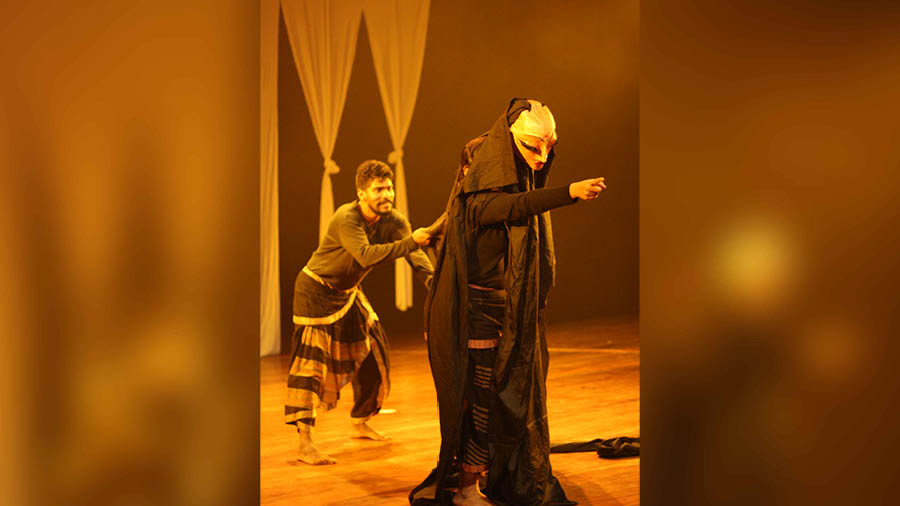
Apart from their emphasis on metaphors and archetypes, Katkatha’s shows are largely nonverbal, which means the puppets are primary and the dialogues just enhance and illustrate them Photo courtesy: Anurupa Roy
Future plans
Anurupa’s group has been conducting a puppet training programme since 2014 under the banner of the UNIMA, an international association of puppeteers that has chapters in 110 countries. “From 2019 we have introduced a six months’ course in professional puppetry. Out of the eight people who have graduated, five are active puppeteers.”
From September, her group is planning to start what she calls a puppet lab. “Applications have come in from across the country for the training course. We will have workshops for two weeks and will give grants to promising shows. These will be premiered in Delhi in December.”
Puppetry, according to Anurupa, has come to a stage where it is considered a dying art. That is because of lack of training, she says. “My aim is to create a space where there will be hundreds of puppeteers. Having formal training and not having one, I think, makes a huge difference.”

